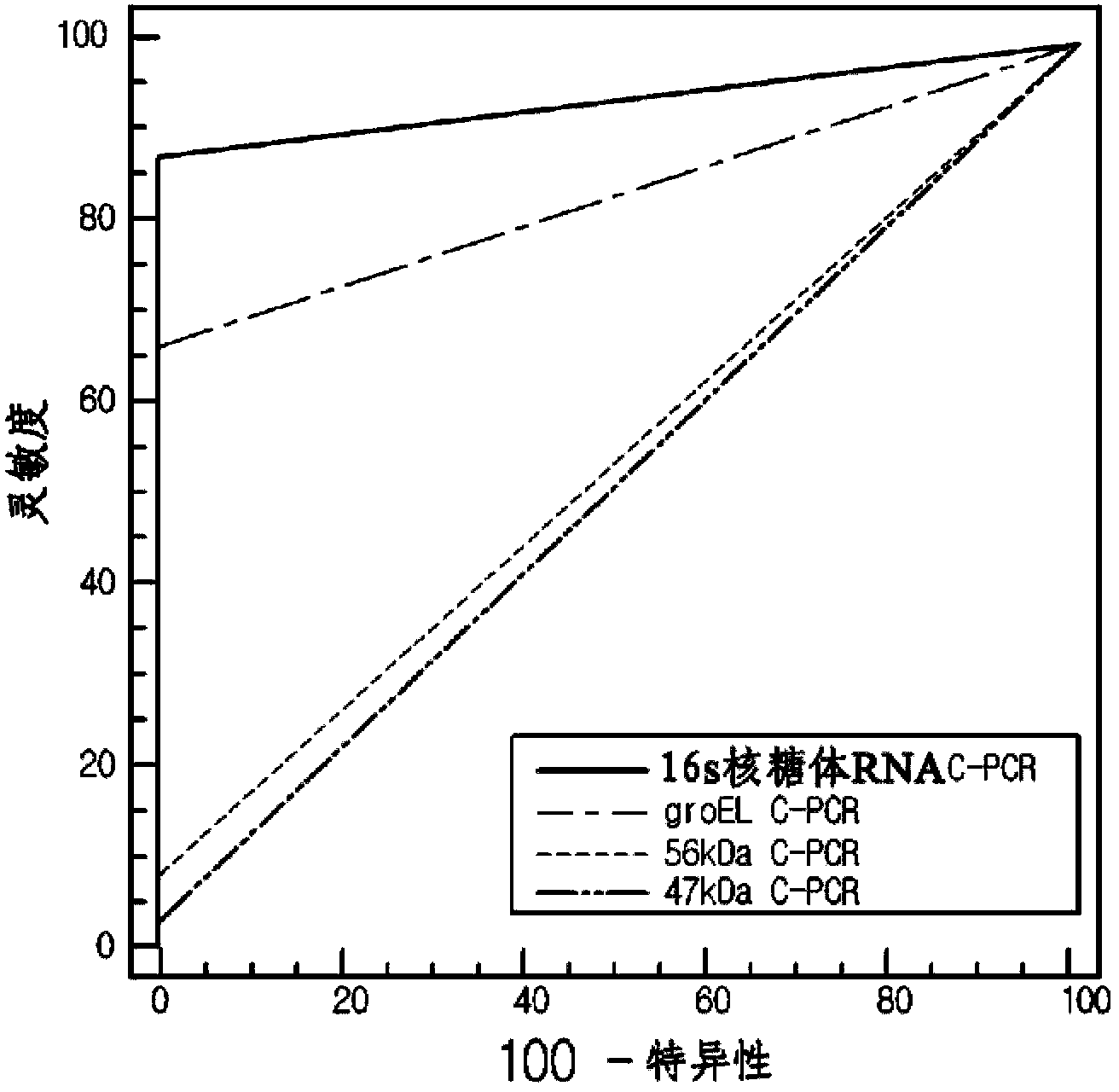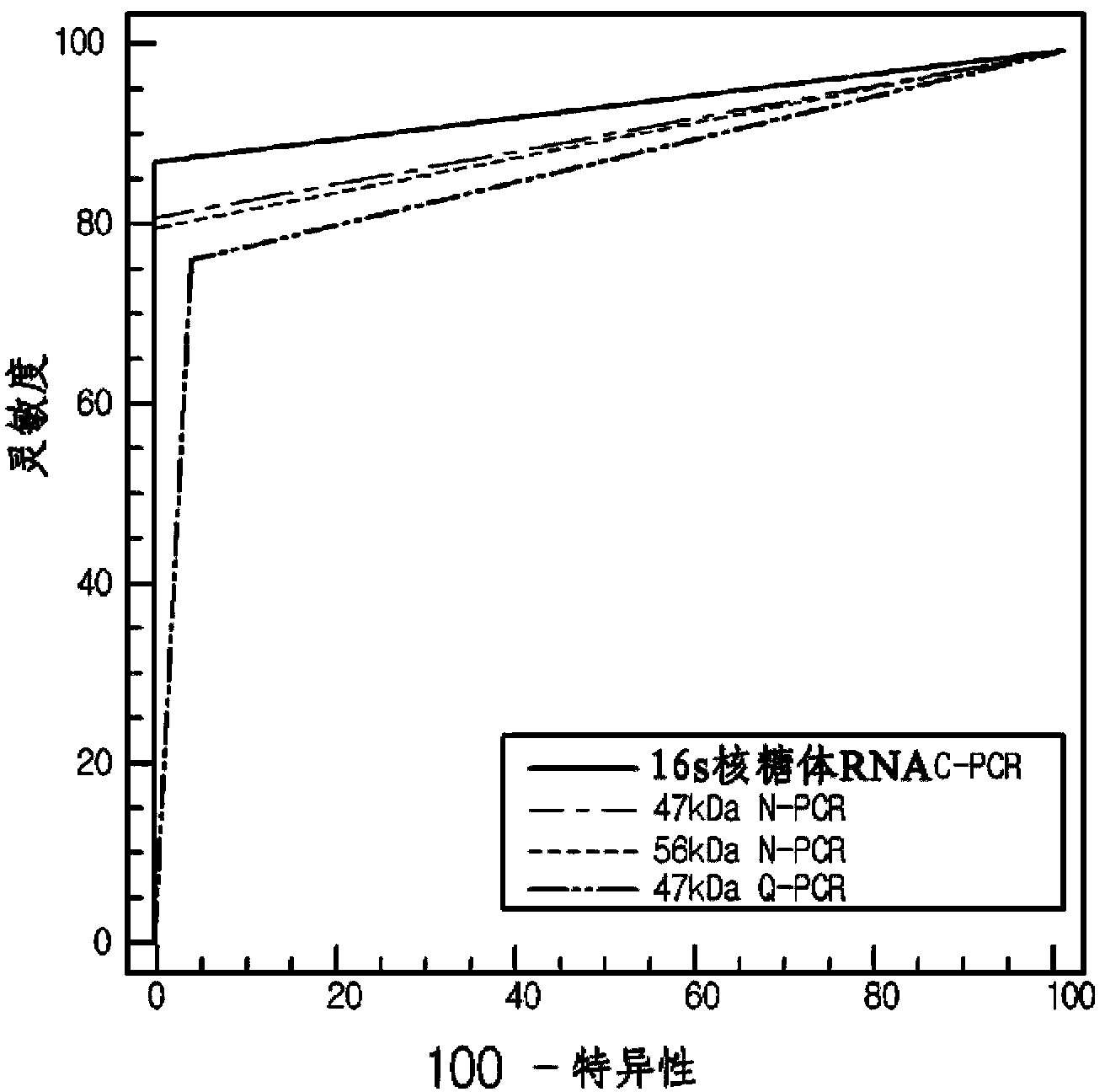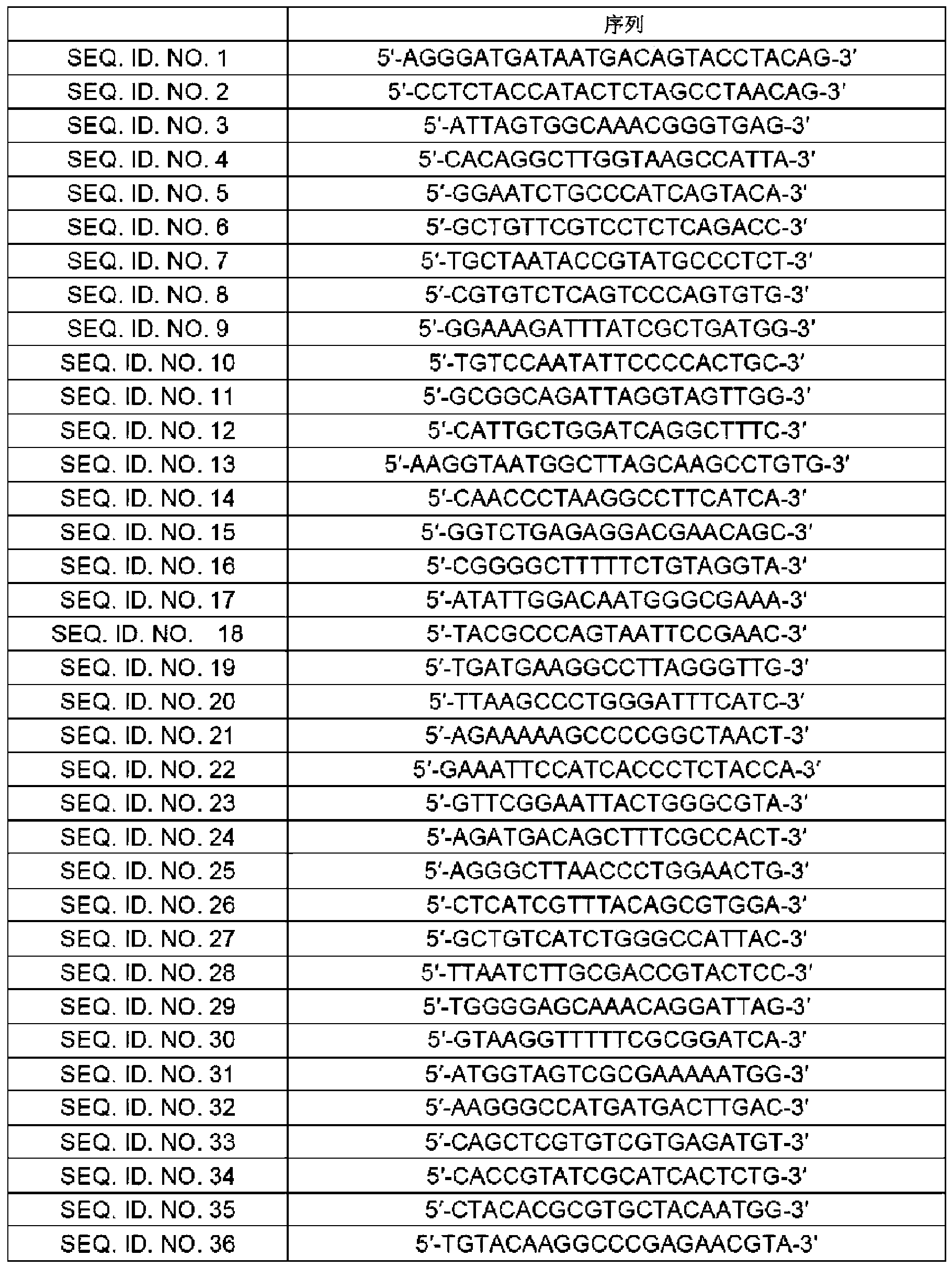Primer pairs for detecting orientia tsutsugamushi and detection method using the same
A technology of Orientia tsutsugamushi and primer pairs, applied in biochemical equipment and methods, microbial determination/inspection, DNA/RNA fragments, etc., can solve the problems of low sensitivity, expensive testing equipment, long testing time, etc. Diagnostic accuracy, improving diagnostic accuracy, overcoming the effect of expensive equipment
- Summary
- Abstract
- Description
- Claims
- Application Information
AI Technical Summary
Problems solved by technology
Method used
Image
Examples
Embodiment 1
[0036] Example 1: Preparation of primers
[0037] The primer pair was designed based on the base sequence of the 16s ribosomal RNA gene amplified from the blood samples of patients infected with Boryoung strain (this strain is very common in Korea). However, it can also be used for other model strains (such as Gilliam, Karp, Kato) and various other strains. More specifically, the primer pairs were prepared as forward primers (positions 403-428) and reverse primers (positions 577-601) for GenBank accession number bankit1356164HM352765: Orientia tsutsugamushi Boryoung genotype SEQ.ID.NO.1 and SEQ.ID.NO.2 represent. Forward primers and reverse primers for other regions were also prepared, and the primers were represented by SEQ.ID.NO.3-SEQ.ID.NO.36 (see Table 1).
[0038] [Table 1]
[0039]
Embodiment 2
[0040] Example 2: Sample preparation and vital statistics
[0041] From 2007 to 2008, among patients 18 years of age or older who came to the hospital due to acute fever within 4 weeks of the onset, patients who exhibited at least two symptoms selected from the group consisting of the following symptoms were selected Come to take a blood sample: eschar, erythematous papules, headache, general collapse, muscle pain, cough, nausea, and stomach pain.
[0042] For blood samples in which the IFA titer of Orientia tsutsugamushi was increased by at least four times, patients with these samples were diagnosed as tsutsugamushi. Therefore, such patients are classified into the tsutsugamushi group (tsutsugamushi group). In patients in the fever control group (non-tsutsugamushi group), the indirect fluorescent antibody against Orientia tsutsugamushi was not detected in their blood, but they passed tests (such as serological tests, culture tests, and peripheral blood smear tests, etc.) ), the...
Embodiment 3
[0048] Example 3: PCR diagnosis using the primer pair of the present invention
[0049] In order to confirm the effectiveness of the prepared primer pair and the corresponding inspection method, DNA was extracted from the blood sample of the tsutsugamushi patient prepared in Example 2. In particular, whole blood is taken from the patient. Separate the buffy coat. Then, DNA was isolated by using QIA amp DNA mini kit (Qiagen, Germany). Separate by following the protocol attached in the manual. The isolated DNA was used as a template for detecting Orientia tsutsugamushi.
[0050] As a method for PCR diagnosis, conventional PCR is selected in this article, and the extracted DNA is used as a template. For the PCR, a 20μl reaction mixture was prepared by adding the following ingredients to AccuPowerTM PCR PreMix (1U Top polymerase, 250μM dNTP, 10mM Tris-HCl (pH9.0); Bioneer, Daejeon, Korea): 2μl template DNA, 1μl5pmol / μl forward primer and 1 μl 5pmol / μl reverse primer, and 16 μl st...
PUM
 Login to View More
Login to View More Abstract
Description
Claims
Application Information
 Login to View More
Login to View More - R&D
- Intellectual Property
- Life Sciences
- Materials
- Tech Scout
- Unparalleled Data Quality
- Higher Quality Content
- 60% Fewer Hallucinations
Browse by: Latest US Patents, China's latest patents, Technical Efficacy Thesaurus, Application Domain, Technology Topic, Popular Technical Reports.
© 2025 PatSnap. All rights reserved.Legal|Privacy policy|Modern Slavery Act Transparency Statement|Sitemap|About US| Contact US: help@patsnap.com



